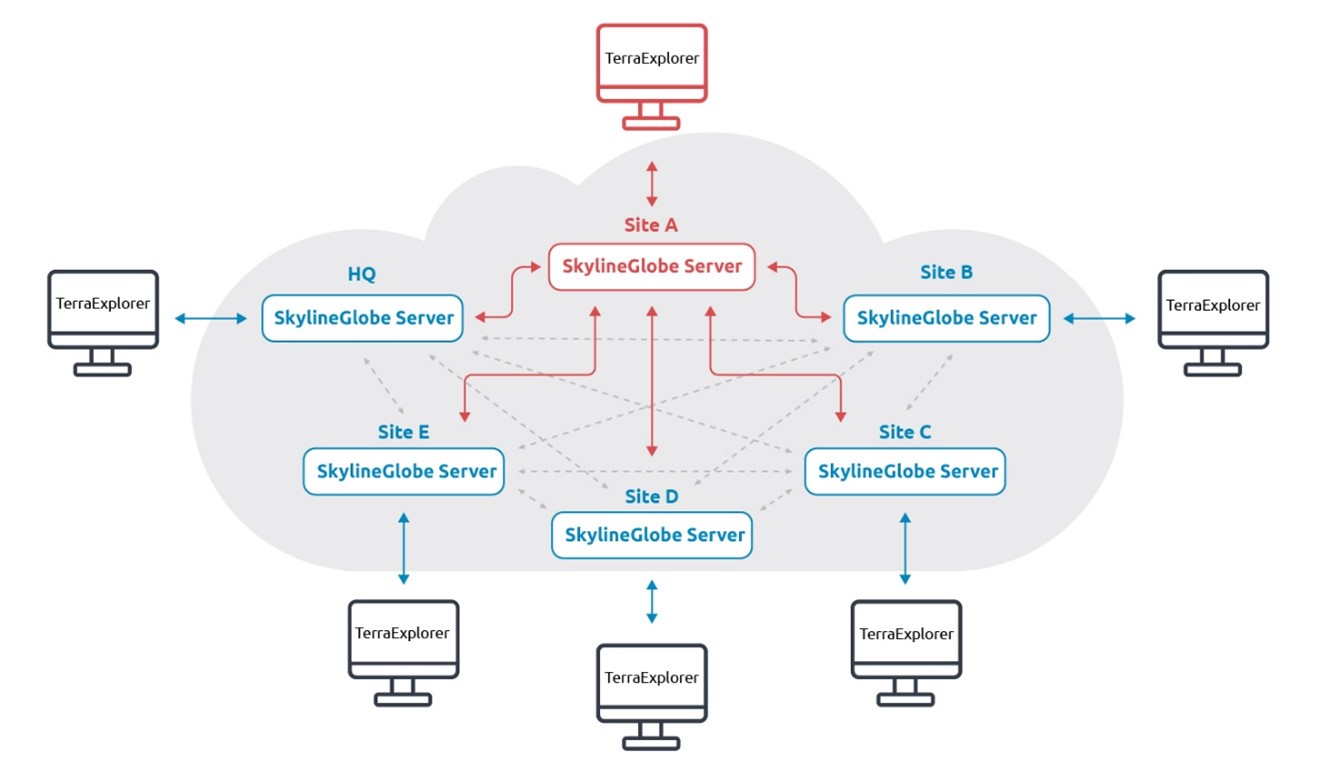Working with a Federated SkylineGlobe Server Network
SGS v7.1 restored the TerraGate v6 distributed network architecture, enabling users to fly on a single project managed by a collection of geographically distributed SkylineGlobe servers (nodes) that share each other’s geospatial data to provide a fused global view of the data. Each node typically provides data for a different geographic area and manages a data cache for sections of data handled by other server nodes. When users connect to a dataset on a local node, it can access the other nodes and seamlessly fuse the unique data they serve into a consolidated dataset which the user then sees. This distributed data concept enables the data for each area of operation to be managed by those who have the latest data, while fusing it into a comprehensive consolidated dataset (the master project) for all users. There is no need to send all the data to a central repository, or to rebuild or recompile the entire dataset to add or update data. When data in a specific area is added or modified, users automatically get the latest updates. Remote caching capabilities provide redundancy as well, by allowing continued access to the remote nodes’ data when the network connection is lost.
The distributed server network differs from a server cluster in both structure and purpose. In the distributed network, every server has its own database. All of these databases are then consolidated into a single terrain project (TBP) to provide a fused global view of the data. In a cluster, in contrast, all of the servers share a single, common configuration MPT database located on a shared drive, which allows them to communicate with each other for the purpose of serving data to clients with higher availability.
